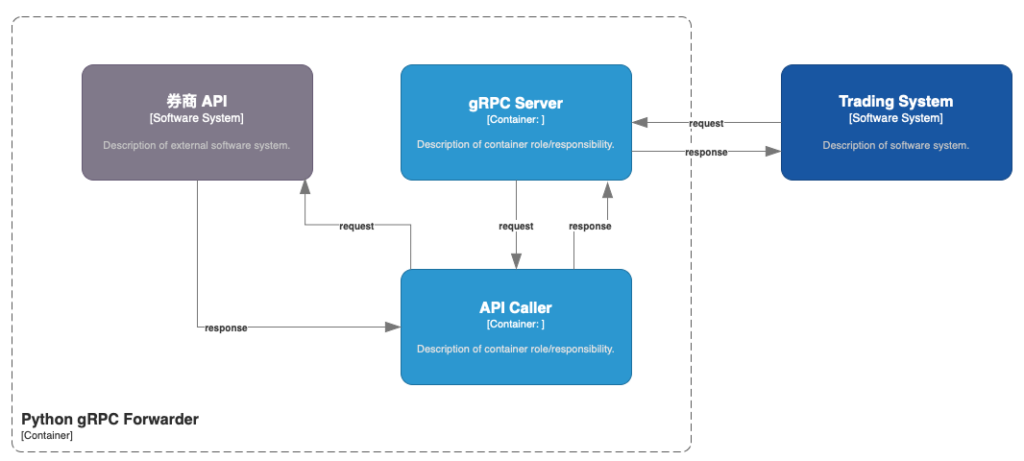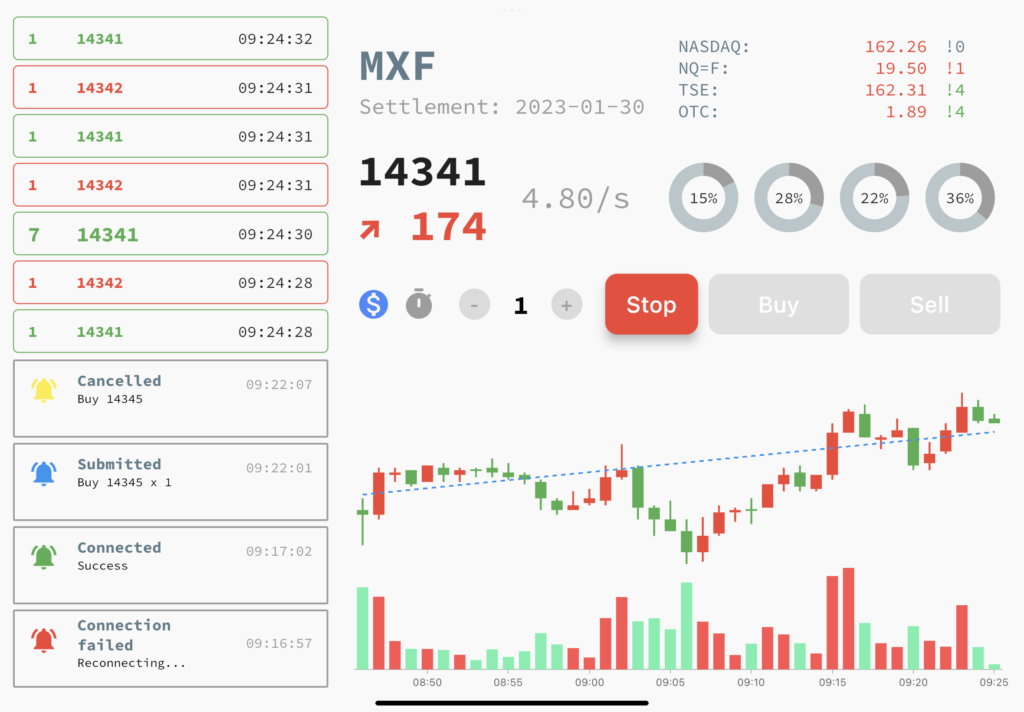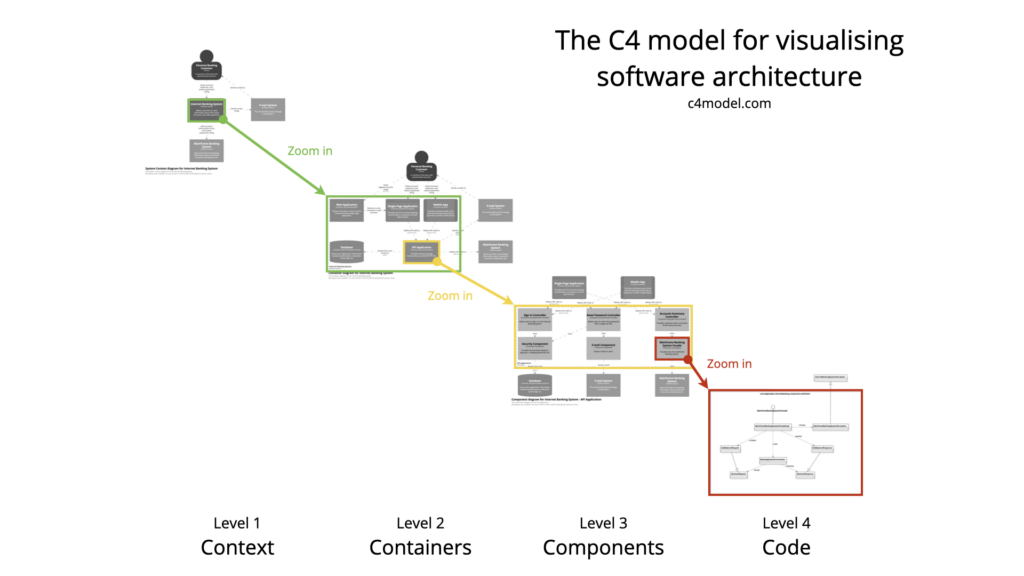Table of Contents
前言
2023 鐵人賽 DAY-04
昨天入門了 Protobuf
有提到這是作為 Process 之間『溝通』用的『訊息結構』
那今天理所當然的要進入到溝通這個行為所建立在的 gRPC
過程中,會直接用本次整個專案的框架來演示
就是會以跨語言的方式來實作(Python, Golang)
為什麼要用 gRPC
- 高效性: gRPC 使用Protobuf 而非 XML 或 JSON,因此較節省頻寬,並減少序列化和反序列化的時間與資料量
- 多語言支援: gRPC 支援多種程式語言,使得不同平台和系統能夠通過相同的API進行通信
- 自動生成程式碼: 使用 Protobuf 定義介面後,gRPC 工具可以自動生成用於客戶端和伺服器的程式碼
- 長連線: 允許雙向通信,這對於需要實時更新的應用非常有用
擴展 Proto

這邊為什麼用到『擴展』呢
昨天我們定義了一個只有期貨單的 Proto
syntax = "proto3";
option go_package = "./pb";
package toc_python_forwarder;
message FutureOrderDetail {
string code = 1;
double price = 2;
int64 quantity = 3;
}到這邊,只有訊息結構
但還沒有定義『溝通』的方法
讓我們來稍微完善一下
初步定義一個購買期貨的方法
並且加入一個訊息結構來回傳下單的結果
service TradeInterface {
rpc BuyFuture(FutureOrderDetail) returns (TradeResult) {}
}
message TradeResult {
string order_id = 1;
string status = 2;
string error = 3;
}讓我們把他們放在一起
syntax = "proto3";
option go_package = "./pb";
package toc_python_forwarder;
service TradeInterface {
rpc BuyFuture(FutureOrderDetail) returns (TradeResult) {}
}
message FutureOrderDetail {
string code = 1;
double price = 2;
int64 quantity = 3;
}
message TradeResult {
string order_id = 1;
string status = 2;
string error = 3;
}編譯
這部分在昨天的 Protobuf 中
我已經不小心寫上 gRPC 在編譯所需要的參數
但還是在演示一次
Python
$pip3 install -U \
--no-warn-script-location \
--no-cache-dir \
grpcio \
grpcio-tools
$outpath=./src/pb
$python3 -m grpc_tools.protoc \
--python_out=$outpath \
--grpc_python_out=$outpath \
--mypy_out=$outpath \
--proto_path=./trade-protobuf/protos/v3/app \
--proto_path=./trade-protobuf/protos/v3/forwarder \
./trade-protobuf/protos/v3/*/*.protoGolang
protoc \
--go_out=. \
--go-grpc_out=. \
--proto_path=./trade-protobuf/protos/v3/app \
--proto_path=./trade-protobuf/protos/v3/forwarder \
./trade-protobuf/protos/v3/*/*.proto因為 Flutter 那邊就真的單純是直接拿來取代 JSON
並沒有任何地方會使用到 gRPC
所以這邊並沒有講述到 Flutter gRPC 的編譯
Python Server 端
前面完成了編譯
我們來試著起起看 gRPC Server
因為只是展示,回傳的資料也是先做一下假的~
# Import the necessary gRPC libraries
from concurrent import futures
import grpc
# Import the generated gRPC files
from pb import trade_pb2, trade_pb2_grpc
# Define the gRPC service
class Trader(trade_pb2_grpc.TradeInterfaceServicer):
def BuyFuture(self, request, context):
return trade_pb2.TradeResult(
order_id="123456",
status="success",
error="",
)
# Run the gRPC server
def run_server():
server = grpc.server(futures.ThreadPoolExecutor(max_workers=10))
trade_pb2_grpc.add_TradeInterfaceServicer_to_server(Trader(), server)
server.add_insecure_port("[::]:50051")
server.start()
print("Server started. Listening on port 50051.")
server.wait_for_termination()
if __name__ == "__main__":
run_server()
Golang Client 端
package main
import (
"context"
"fmt"
"log"
"gop/pb"
"google.golang.org/grpc"
)
const (
address = "localhost:50051"
)
func main() {
conn, err := grpc.Dial(address, grpc.WithInsecure())
if err != nil {
log.Fatalf("did not connect: %v", err)
}
defer conn.Close()
c := pb.NewTradeInterfaceClient(conn)
r, err := c.BuyFuture(context.Background(), &pb.FutureOrderDetail{
Code: "IRONMAN DEMO",
Price: 100,
Quantity: 1,
})
if err != nil {
log.Fatalf("could not greet: %v", err)
}
fmt.Printf("Response from server: %s\n", r.GetStatus())
}
整合
Server
$PBPATH=$(PWD)/src/pb
$PYTHONPATH=$(PBPATH) python3 -BO ./src/main.py
Server started. Listening on port 50051.
BuyFuture called, code is IRONMAN DEMOClient
$go run main.go
Response from server: success總結
到這邊就算是初步的展示了一下 gRPC 在跨 Process 的溝通過程
接下來就要準備進入到核心的商業邏輯


